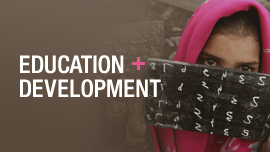The Trump administration wants to incentivize a baby boom by offering a $5,000 cash “baby bonus” for every mother who gives birth. Ironically, the administration is also proposing federal cuts to family-friendly programs such as the Children’s Health Insurance Program (CHIP), Supplemental Nutrition Assistance Program (SNAP), Head Start, and more. If the administration wants to increase the birth rate it needs to make it easier and more affordable to raise children by tackling the underlying causes of a decreased birth rate. A comprehensive set of family-friendly policies will move the needle more than one $5,000 baby bonus.
Approximately 25% of millennials and Gen Zers say they do not want children, for both financial and lifestyle reasons. It costs roughly $200,000-$310,000 to raise one child from birth to 18 years due to increasing prices for all goods and services. Since 2023, the cost of raising a child increased by 25.3% considering tax exemptions or credits. Proposed federal cuts to family-friendly programs such as CHIP, SNAP, and Head Start, compound the situation because these programs helped reduce costs for some families. While $5,000 seems substantial, it will do nothing to mitigate families’ costs for even the first month. A vaginal birth alone in 2023 with in-network health insurance costs approximately $14,000. The actual out-of-pocket costs for families differ based on their health insurance coverage.
True, the fertility rate in the United States has hit historic lows, a trajectory the current administration wants to change with backing from the right. Supporters of pronatal policies fear negative economic consequences with shrinking labor forces. Elon Musk said, “Humanity is dying. … The birth rate is very low … and unless that changes, civilization will disappear.” Attempting to combat the same problem, China and Japan offered one-off cash incentives that were largely unsuccessful. They are both now considering comprehensive policies to change their trajectories. France and Denmark, on the other hand, provide examples of how natalist policies that include child care, tax incentives, paid leave, flexible working arrangements, and more can slow down population decline.
5 investment areas could boost birth rates
Investments in five key areas can move the needle. First, affordable high-quality child care, a top demand, could enable adults to keep working while ensuring their children are learning and cared for. There is no one-size-fits-all for affordable high-quality child care as it can be implemented in centers, homes, or other locations. The U.S. Census Bureau in 2022 found that 67.8% of families with children under 6 have dual incomes requiring some care arrangement. The U.S. Department of Labor’s National Database for Childcare Prices found that in 2022, full-time child care costs between $6,552 and $15,600 per year (which is 8.9%-16% of median household income). By comparison, median gross rent between 2019-2023, according to the U.S. Census Bureau, was $16,176/year. Some states, such as West Virginia, Washington, North Carolina, and Pennsylvania, have tried mixed delivery approaches that include government and private-supported child care in schools, centers, homes, and more to give options for parents based on their values and needs.
Second, family paid leave offers another lever that makes having and raising children more attractive and feasible. It has been touted by Republicans and Democrats, yet a federal policy does not exist in the U.S. Thirteen states and the District of Columbia have paid family leave. A new bipartisan bill introduced in Congress would give supplemental federal grants to states that develop public-private partnerships that allow for six weeks of paid support after the birth or adoption of a child.
Third, families need affordable health care and nutrition to raise children. Health costs are so high that without health insurance, they can wipe out a family’s savings, and more. CHIP and SNAP, two key programs that have positively impacted children and families, are on the chopping block. CHIP, co-financed by federal and state governments, provides health insurance support to millions of low-income children from families that do not qualify for Medicaid, but cannot afford private insurance. The program has increased access to health insurance and supported family economic stability. SNAP, with its reach of over 42 million children and families, alleviates the effects of food deserts for struggling families, improves nutrition, and supports farmers and grocers. Research by the Robert Wood Johnson Foundation finds that “GDP increases by $1.5 billion when $1 billion is invested in SNAP during economic downturns.”
Fourth, investing in young children’s high-quality learning offers up to a 23% return on investment, with the greatest benefits for the most vulnerable and the youngest children. Programs such as Head Start (preschool for 3-to-4-year-olds) and Early Head Start (for expectant mothers and children 0-3) support approximately 800,000 children and families. These programs benefit children and families, especially at-risk children and families, by providing academic and social skills that enable school readiness and support for working families that need care. Research shows that the parents of Head Start children spend more time reading to their children and engaging in math activities. These parent-child interactions are themselves predictors of school success. Programs that support parents to raise their children will incentivize them to have more.
Fifth, families need more money in their pockets. The Child Tax Credit (CTC), supports more than 40 million families and has shown positive benefits. During its one-year expansion, it reduced child poverty to 5.2%. Its current nonexpanded version enables a tax refund of $1,700 for families with dual incomes of up to $400,000. While a $1,700/child tax refund could be a boost for some families, for most, this will not make a dent in their ability to raise children, especially with costs rising. Vice President JD Vance has called for an increase of the CTC to $5,000 per child. Congressman Jared Golden from Maine similarly proposed an idea that would contribute up to $4,000 for expectant mothers, $4,800/year for a child up to age 6, and up to $3,000/year for children over 6. More money in families’ pockets means they can more comfortably raise children.
U.S. policies have never been a panacea for children and families. During fiscal year 2024, just 8.87% of the federal budget was dedicated to children 0-18, and just 1.52% to children 0-3. Helping children and families, though, is a bipartisan issue, even in a deeply polarized country like the United States. Commenting on the current cost of raising a family, for example, Republican Senator Josh Hawley wrote, “Working people cannot afford to get married when they want to, have the number of children they want to or raise those children as they would like. These days, they can barely afford to put a roof over their kids’ heads, to say nothing of health care.” Comprehensive policies that help families raise children work, as evidenced by France and Denmark. If the U.S. wants to increase fertility, it must promise families that they can afford to raise them. Attention to holistic policies and federal-state collaborations that support families will be key, because it will take more than $5,000 to change the current trajectory.
The Brookings Institution is committed to quality, independence, and impact.
We are supported by a diverse array of funders. In line with our values and policies, each Brookings publication represents the sole views of its author(s).








Commentary
More babies, but less support for families? How ironic.
May 20, 2025